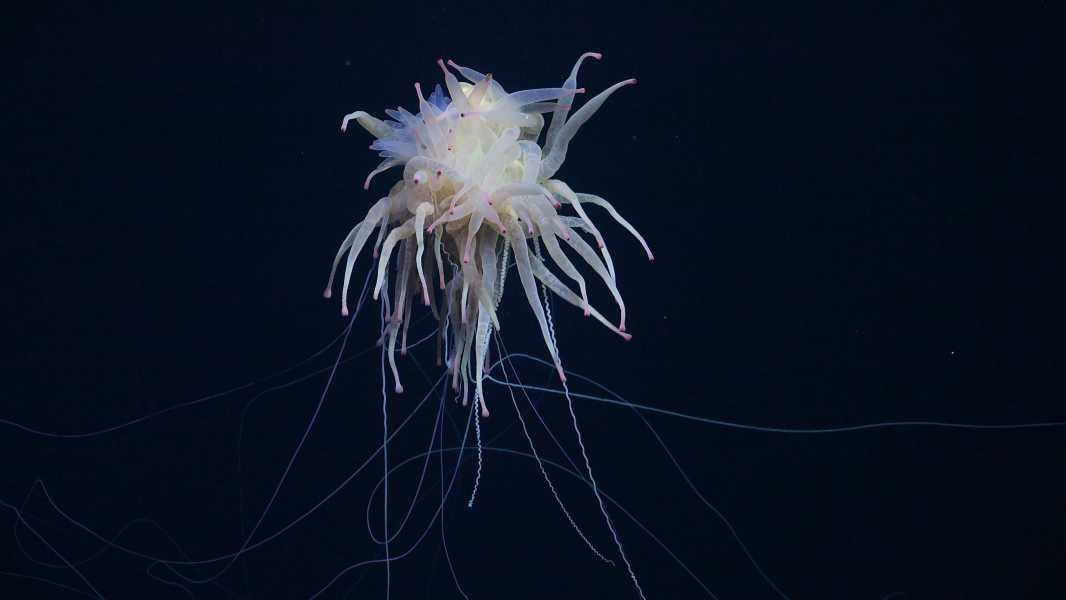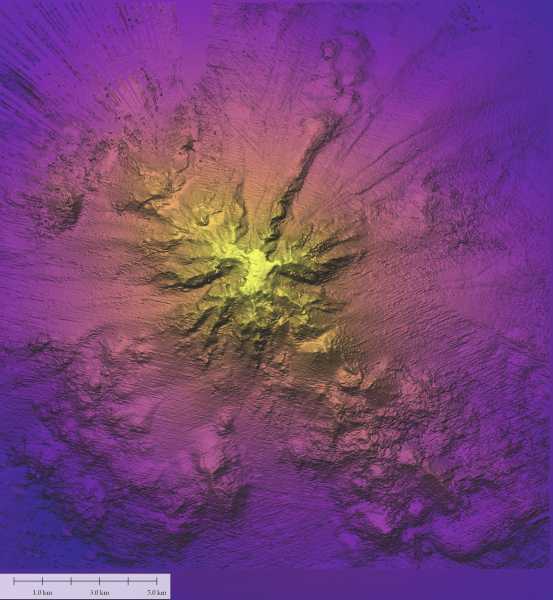
The flying spaghetti monster (Bathyphysa conifera) is an unusual species of colonial organism. (Photo courtesy of the Schmidt Ocean Institute)
Newly captured images show a “flying spaghetti monster” waving its many tentacles nearly 2,200 feet (665 meters) below the surface, near a seamount off the coast of Chile.
Scientists captured the footage using a remotely operated vehicle (ROV) deployed from the research vessel Falkor (too) near a previously unexplored seamount in the Nazca Ridge, an underwater mountain range in the southeastern Pacific Ocean. The video shows the spaghetti monster (Bathyphysa conifera) in close-up, showing off its pink-tipped sausage-like limbs and other thread-like appendages.
“The seamounts of the southeast Pacific Ocean are home to amazing biodiversity,” said Alex David Rogers, a marine biologist and scientific director of Ocean Census, a global program aimed at accelerating the discovery of marine species, who was involved in the discovery.
Researchers spotted the flying spaghetti monster about 900 miles (1,450 kilometers) off the Chilean coast, near a little-known seamount rising 10,200 feet (3,109 meters) above the seafloor.
Flying spaghetti monsters are colonial organisms made up of thousands of multicellular “zooids,” each with a specific function, such as reproduction or digestion. The creatures are carnivorous and typically live at depths of 3,300 to 9,900 feet (1,000 to 3,000 m). They can reportedly grow to be several feet long.
The expedition that captured the new images, led by the Schmidt Ocean Institute, is the third to explore the mountain ranges off the coast of Chile this year. Previous expeditions from January to February discovered more than 100 new species and a giant seamount along the Nazca Ridge and the neighboring Salas y Gomez Ridge.

Researchers have mapped a previously unexplored seamount off the coast of Chile.
The three expeditions reportedly increased the number of known species in the southeast Pacific from 1,019 in 2023 to more than 1,300 today.
Rogers said the study “will greatly enhance our understanding of the distribution of remarkable life forms on these seamounts, including several that have never been seen before.”
Sourse: www.livescience.com





